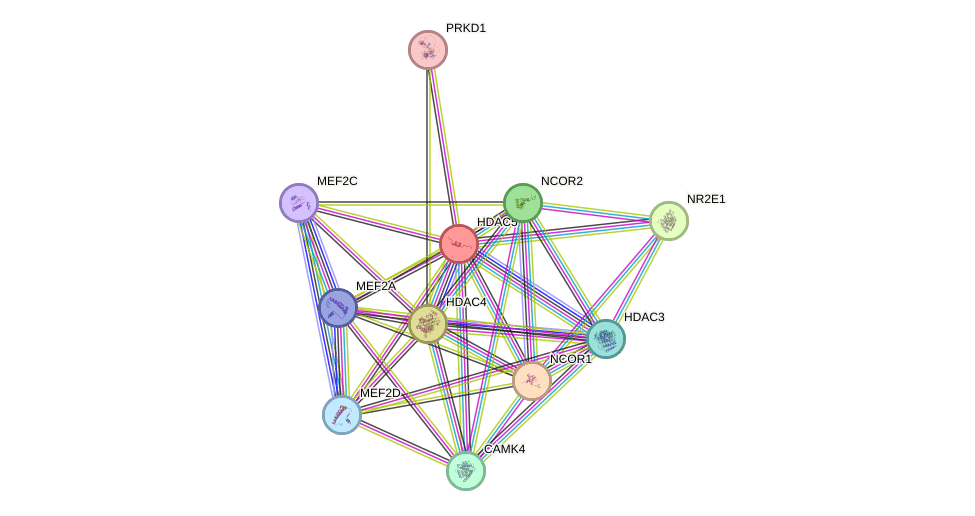HDAC5 and the Epigenetics of Addiction

One of the most fascinating aspects of the field of genetics is the study of epigenetics. Epigenetics refers to the ways in which genes can be turned on or turned off without altering the underlying DNA of the gene. Epigenetic enzymes change the ways genes express themselves.
For example, the diet of a mother prepares the fetus for real-world conditions, such as drought, famine, dietary variety, and which foods are in abundance. This information turns on or turns off genes that control metabolism in preparation for the real-world conditions a child will be born into.
Recently, researchers have discovered an epigenetic enzyme, HDAC5, which limits the expression of the gene, Scn4b, which is involved in “the formation of strong drug-related memories.” The research was just published in Biological Psychiatry by researchers with the department of neuroscience at the Medical University of South Carolina.
Two very interesting things about this study. First, the study looked specifically at cocaine addiction. Addictions to amphetamines or cocaine are notoriously difficult to treat pharmaceutically, with no drugs approved by the Food and Drug Administration (FDA). Secondly, the study focused on the strength of drug cues in the tendency to relapse when in treatment for cocaine addiction.
The research was conducted with male and female rats. The HDAC5 limited cocaine-seeking behavior, but not sucrose-seeking behavior. Researchers concluded that the HDAC5 controlled the expression of the Scn4b gene, which governs the cocaine cue sensitivity. This makes HDAC5 very promising for a targeted drug that reduces cue sensitivity to cocaine and possibly other substance use disorders (SUDs).
In a news release announcing the release of the study, scientific publisher Elsevier said it “uncovers a new molecular target for the development of novel SUD treatments.” Regarding the role of cue sensitivity in cocaine addiction, Elsevier noted:
One major contributor to relapse risk is the presence of enduring associations between the primary rewarding effects of the drug and cues in the drug-use environment.
A study reported in the journal Nature in February of this year found HDAC5 to be an effective antidepressant for mice. The research was conducted at the Department of Pharmacology at Ningxia Medical University in Yinchuan, China. Researchers relate that “adverse environmental conditions such as chronic stress and social isolation are believed to be important factors contributing to depression” and that these factors increase HDAC5 levels.
HDAC5 inhibitors could theoretically be used to treat depression. Just as HDAC5 strengthens drug-related cue sensitivity, so it also may strengthen trauma-related cue sensitivity that is behind so much depression. Researchers conclude:
HDAC5 inhibitors can be used for treating depression. Indeed, previous studies have confirmed the therapeutic potential of HDAC5 inhibitors in depression using animal models and clinical trials. HDAC5 inhibitors significantly improve behavioral performance in mice and alleviate depressive symptoms. In human clinical trials, HDAC5 inhibitors have shown effective antidepressant efficacy, with positive impacts on the emotional and psychological states of patients.
How HDAC5 inhibitors work is not known precisely. They regulate the neurotransmitters, serotonin and dopamine, which are important in the brain’s reward system and emotional regulation. HDAC5 inhibitors also impact glutamate ion receptors. These are also impacted by GLP-1 drugs. It is possible that the positive impacts of GLP-1 drugs in addiction treatment are the result of inhibiting HDAC5.
According to the researchers from China, HDAC5 inhibition doesn’t just dull cue sensitivity, it “restores the regenerative ability of hippocampal neurons, promotes nerve growth and synaptic formation, increases the number of synapses, and enhances synaptic function to produce anti-depressive effects.” There is potential to repair brain damage caused by repetitive abuse. That is a grant-worthy project if I’ve ever heard of one.
Written by Steve O’Keefe. First published April 17, 2025.
Sources:
“Epigenetic control of an auxiliary subunit of voltage-gated sodium channels regulates the strength of drug-cue associations and relapse-like cocaine seeking,” Biological Psychiatry, February 7, 2025.
“Novel Brain Study Increases Understanding of What Triggers Drug Use Relapse,” Elsevier News Release, April 10, 2025.
“Novel histone deacetylase-5 inhibitor T2943 exerts an anti-depressive effect in mice by enhancing GRID1 expression,” Nature, February 6, 2025.
Image of HDAC5 protein (human) from STRING interaction network, used under Creative Commons license.




